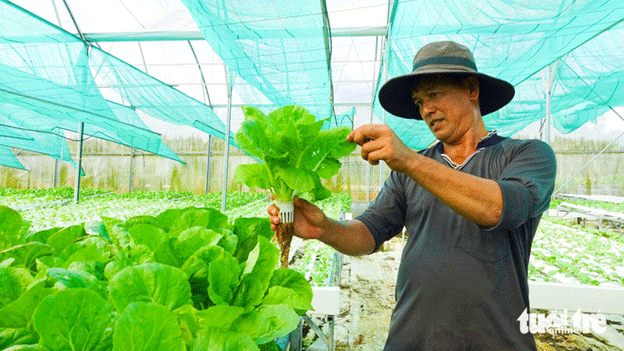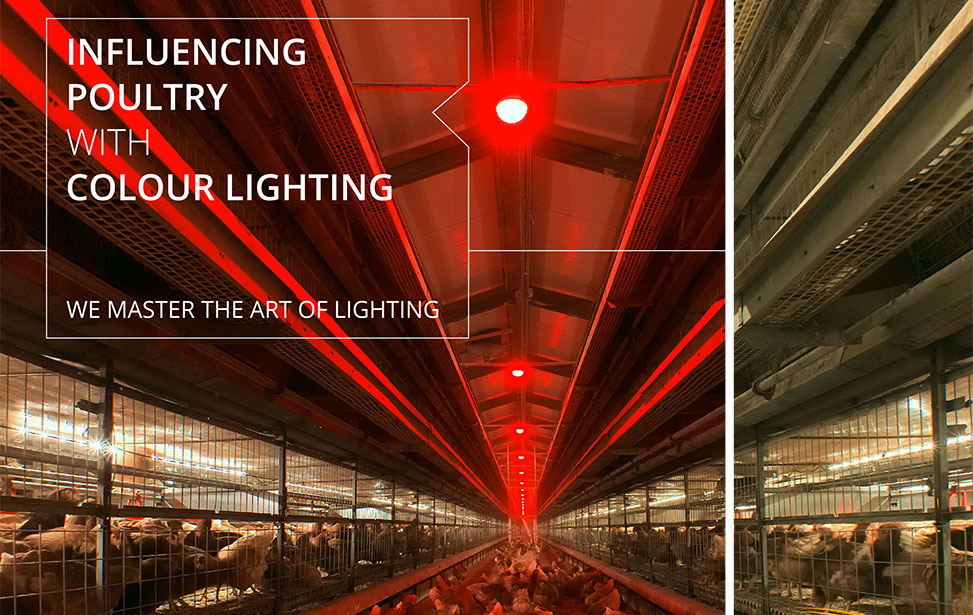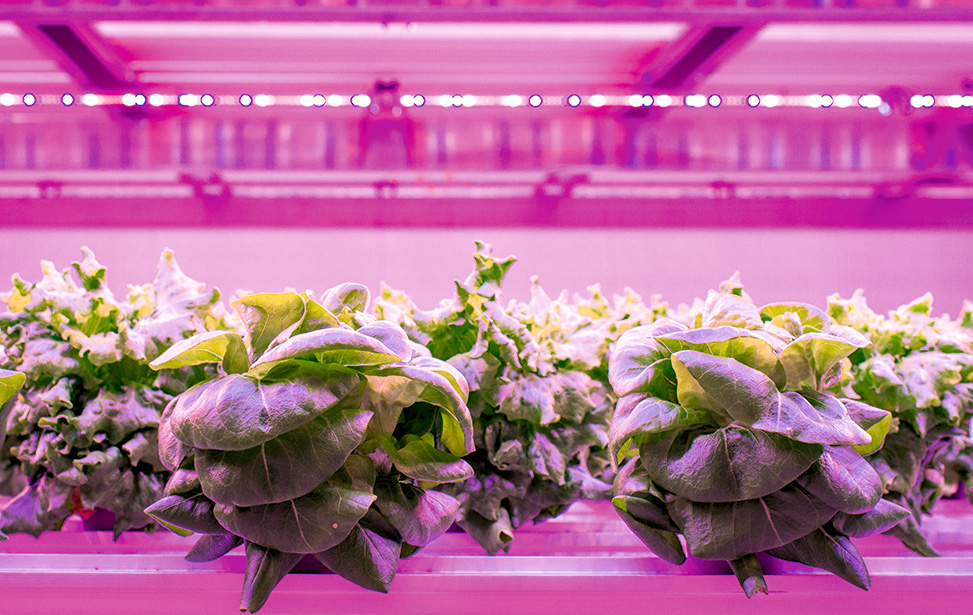In Phu Quoc, a bustling Vietnamese island known for its tourism and local cuisine, demand for fresh, clean vegetables has surged in recent years. To meet this need, farmer Trần Thanh Vũ has pioneered a unique hydroponic farming model. On his 4,000 square meters of greenhouse space, he grows a variety of leafy greens, including unique native vegetables like Peperomia pellucida (known locally as rau càng cua) and Purslane (rau sam), as well as more common crops like Chinese cabbage and chives. His commitment to clean, high-quality produce has helped him achieve significant profits and support local food security on the island.
A Hydroponic Farming Pioneer
Vũ began his journey into hydroponics by converting unused family land in Dương Tơ, a commune in Phu Quoc. Initially, he faced considerable challenges, particularly with finding stable markets for his produce and adapting his setup to Phu Quoc’s hot, sunny climate. To address this, Vũ added shading nets and misting systems to cool the greenhouses and maintain optimal growing conditions for his plants. Today, his system enables him to produce vegetables that are not only vibrant and healthy but also in demand among locals and tourists who value clean and sustainable food options.
High Demand for Native Greens
Hydroponic farming allowed Vũ to tap into the unique demand for native greens like Peperomia pellucida and Purslane. These vegetables are popular in local cuisine and valued for their nutritional and medicinal properties. On average, Vũ produces 800 kg to 1 ton of these hydroponic vegetables each month, which he supplies to markets in An Thoi and other areas of Phu Quoc. Selling prices range from 25,000 to 35,000 VND per kilogram, often 5,000–10,000 VND higher than conventionally grown produce, as consumers are willing to pay a premium for high-quality, pesticide-free vegetables.
Profitability and Future Expansion
Though the initial investment in greenhouse technology is significant—costing between 700 million and 1 billion VND per greenhouse—hydroponics provides notable advantages. Vũ’s setup requires less labor, has minimal issues with pests, and produces vegetables that command high market prices. With an average monthly profit of 40 million VND, Vũ earns around 500 million VND annually. This return has inspired him to expand further, with plans to add more greenhouses and diversify his vegetable offerings to better serve the island’s markets and meet the needs of local residents and tourists alike.
Support from Local Authorities
Phu Quoc’s local government has been supportive of Vũ’s initiative. Lê Đình Quảng, Chairman of the Phu Quoc Farmers’ Association, has praised Vũ’s model, noting its positive economic impact and the contribution it makes to local food security. By growing native vegetables through sustainable methods, Vũ is not only increasing his income but also promoting a model of modern, responsible agriculture that other local farmers are encouraged to follow.
Trần Thanh Vũ’s hydroponic model highlights the potential for innovative agricultural methods in meeting modern market demands, even in challenging climates. His success with native greens exemplifies how hydroponic systems, while requiring a high initial investment, can provide high-quality produce, reduce labor, and offer long-term profitability. As Phu Quoc’s agricultural community looks to the future, Vũ’s model serves as a valuable blueprint for farmers aiming to profit from sustainable and environmentally friendly farming practices.












